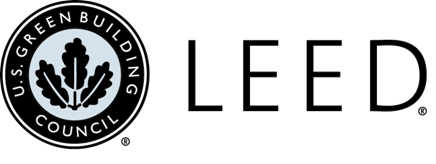Green Building at Hilltop

The U. S. Green Building Council’s Leadership in Energy and Environmental Design [LEED] is a green building certification program that recognizes best-in-class building strategies and practices. To receive LEED certification, building projects need satisfy prerequisites and earn points to achieve different levels of certification.
Scores are tallied for different aspects of efficiency and design in appropriate categories. For instance, LEED assesses in detail:
- Site Planning
- Water Management
- Energy Management
- Material Use
- Indoor Environmental Air Quality
- Innovation and Design Process
The LSU Hilltop Arboretum’s Imogene Newsom Brown Education Facility, designed by award-winning Lake|Flato Architects of San Antonio, Texas is the first LSU building to be registered with the U. S. Green Building Council for LEED v2.2 Certification. The Bert Turner Courtyard designed by Nelson Byrd Woltz Landscape Architects anchors the education facility including the Beverly Brown Coates Auditorium to the existing open-air pavilion, and serves as an important demonstration for best-practices for developing outdoor living space that extends the indoor space into the landscape, and works in concert with natural systems to utilize water and plant resources in a sustainable way. The LSU College of Art and Design will use the project as an educational resource for teaching green building principles in the departments of Architecture, Landscape Architecture and Interior Design for graduate and under-graduate students.
Learn more about the LEED v2.2 categories and credits awarded to the LSU Hilltop Arboretum (PDF) for sustainable sites, water efficiency, energy and atmosphere, materials and resources, indoor environmental quality and invocation and design process.
LEED Categories
The following features of the Educational Center and Courtyard demonstrate Hilltop Arboretum’s dedication to environmental stewardship, through engaging in sustainable building, best practices and qualifying for LEED Certification.
Reduced potable water consumption by 50% by specifying native plantings and installing a cistern water collection system.
Diverted 92% of construction waste from incineration or landfills.
Purchased over 30% of the materials in the project that were sourced and manufactured within a 500 mile radius of the project.
Used adhesives, paints and a carpet system containing less (or 0%) than the maximum allowed VOC content.
Provided access to views and daylight for 100% of the interior spaces.

